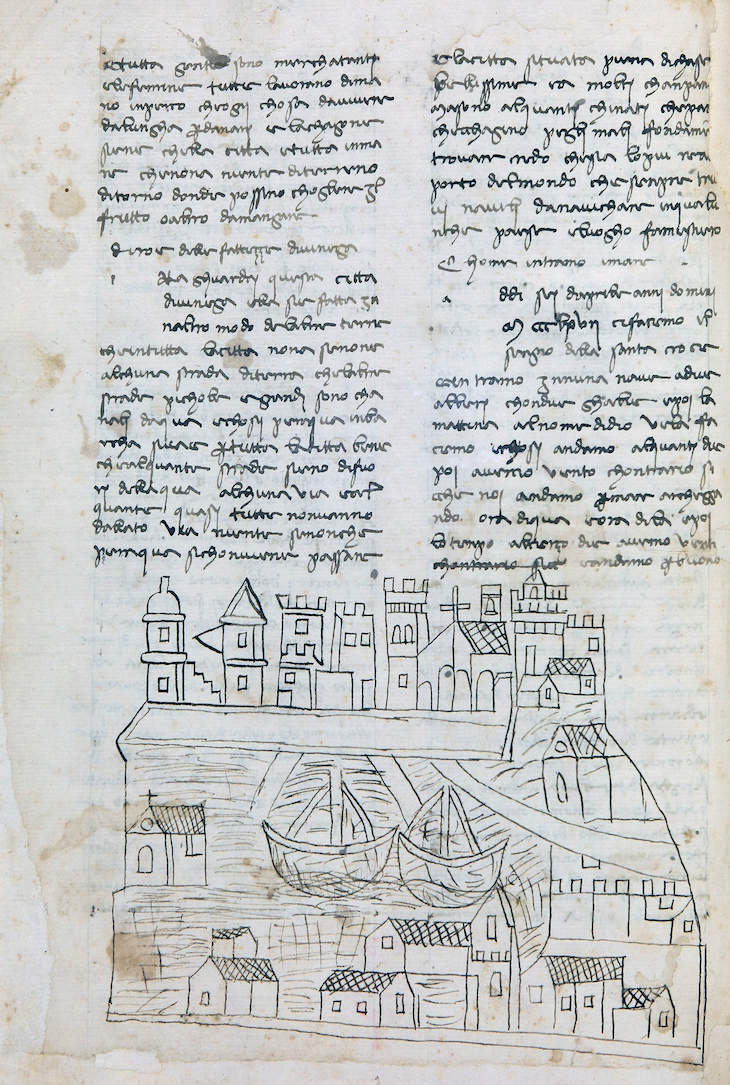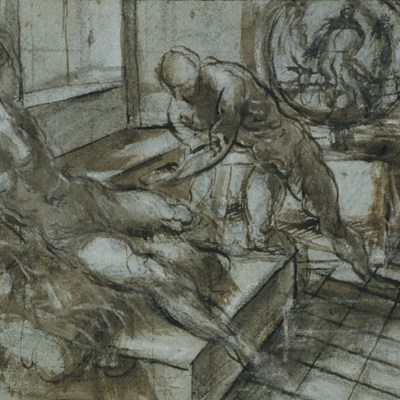In 1346 a Franciscan friar, Niccolò da Poggibonsi, set off from Tuscany on a pilgrimage to the Holy Land. He recorded his four-year-long journey in a manuscript still preserved in the Biblioteca Nazionale in Florence, illustrated with spirited sketches apparently in his own hand.
Frequently copied and eventually printed in Bologna in 1500 and again in Venice in 1518, Fra Niccolò’s narrative is well known to historians of pilgrimage, while his illustrations of the Holy Land have long intrigued scholars of cross-cultural exchange. His view of Venice, however, has never before attracted close attention, even though it is the earliest known drawing of the city. The first person to recognise its importance is Sandra Toffolo, a post-doctoral researcher in the school of history at the University of St Andrews. She will discuss the illustration in Describing the City, Describing the State: Representations of Venice and the Venetian Terraferma in the Renaissance, to be published by Brill later this year.
Like most European pilgrims, Fra Niccolò sailed on a Venetian ship. Before he embarked on 6 April he recorded his impressions of Venice – a city where, he writes, ‘all the inhabitants are merchants’. He marvels that the streets are mostly canals, and admires the ‘most beautiful houses and many steeples’, although he notices that some of the campanili seem to lean because of the problems in building foundations. He concludes: ‘And I believe it is the most royal harbour in the world; for you will always find ships to sail to any country a man needs to go.’
Manuscript page with a drawing of Venice (1346–50), Fra Niccolò da Poggibonsi. Courtesy of the University of St. Andrews, with permission from the Ministero per i beni e le attività culturali e per il turismo and the Biblioteca Nazionale Centrale, Florence

His written description serves as a commentary on his drawing. Like many untrained draughtsmen, Fra Niccolò adopted schematic conventions for houses of no special importance – the cross-hatched tiled roofs and rectangular windows are similar to those, for example, in his view of Nazareth. The church in the right background, defined by several large arches and an outsized bell in the campanile, is likely to represent San Marco. In 1346 the rebuilding of the south wing of the Palazzo Ducale had only recently begun, but the tall crenellated towers in the centre background may belong to the previous palace on the site. The church on the water in the left middle-ground may be San Giorgio Maggiore, which Fra Niccolò probably visited on his tour of the city’s relics, and the rest of the foreground could show either the Giudecca or the Lido. But it was the port that remained in his memory most clearly. The most prominent feature is the broad quay across the centre of the drawing, with its long jetties giving access to the two outsized ships, providing a vivid impression of the Riva degli Schiavoni where pilgrims embarked for the Holy Land.
View of the 13th-century mosaic depicting the arrival of the body of St Mark in Venice, above the left-hand portal of the facade of San Marco in Venice. Photo: the author

Venice has beguiled artists for centuries. The left-hand lunette on the facade of San Marco still displays a 13th-century mosaic of the appearance of the church at that time, and a 12th-century map, redrawn by Fra Paolino around 1346 (the year of Fra Niccolò’s departure from Venice), shows the layout of the city with remarkable precision. Yet no topographical drawings by visitors to the city in the later Middle Ages have been discussed before now. Toffolo’s identification of this free-hand sketch by an enthusiastic travelling friar provides a fascinating new addition to the known images of Venice.
Deborah Howard is Professor Emerita of Architectural History at the University of Cambridge.



